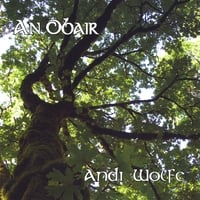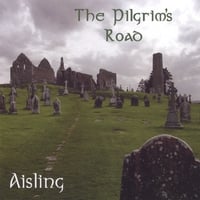
The morning dawned with beautiful clear skies - a perfect day for trekking. I remember it was cool and calm, so the layers were reasonable - wool underlayer, trekking shirt, and a fleece jacket.
Before getting on the trail, we did a short tour of the monastery at Tengboche. This is one of the oldest monasteries (maybe the oldest) in the region.
 The inside of the monastery is very colorful. All of the color schemes and symbolism tell some significant story. I wish I knew more about Tibetan Buddhism so that I could understand more about what I was seeing here, but it was enough that it grabbed my attention and filled me with a sense of wonder.
The inside of the monastery is very colorful. All of the color schemes and symbolism tell some significant story. I wish I knew more about Tibetan Buddhism so that I could understand more about what I was seeing here, but it was enough that it grabbed my attention and filled me with a sense of wonder.BTW - I think this is the last time during the trek that I could be seen without my hat ;-), and it's one of the few pics Steve and I have of us together.

Ceiling panels with mandalas. The shape of the mandala matches the view from above of the monastery or temple. I don't know if these represent Tengboche or other sites, or both.

One of the buddhas inside the monastery.

These wraps are used by the monks during their prayer sessions. It's rather cold inside, so I think these must be very welcome during the hours of prayer and meditation.

I've no clue as to the use of this item, but it is a beautiful object.

Another shrine within the main building.

Butter candles line the walls of the main room.

A view of the mountains surrounding Tenboche.

Gathering together for the beginning of the day's trek.

Tengboche sits atop a ridge, so the first part of the day was downhil through a grove of trees that line the path. The canopy was just starting to fill in.

There were a lot of birch trees with interesting bark.

The path was also lined with birds singing in the morning sun. I finally got a picture of this one - I marked it in my Birds of Nepal book, but I don't have that close at hand as I'm typing this entry.

Ditto for this one.

Some of my favorite lichens were found in this valley past Tengboche.

My all time favorite lichen - how cool is that?
BTW - lichens are symbiotic organisms, consisting of a fungus and algae.

Breakfast time?

I loved the petite irises lining the path. These were less than six inches tall, but the flowers were about three inches across - pretty spectacular.

Another of the four dozen or so species of primrose in the region.
 As usual, downhill sections end in a river crossing. This bridge looked pretty sturdy, but I didn't happen to notice the bridge beneath this bridge - a rickety suspension one. I think I got a photo of it on the return trip, though, so I'll try to post a reminder for that day's narrative.
As usual, downhill sections end in a river crossing. This bridge looked pretty sturdy, but I didn't happen to notice the bridge beneath this bridge - a rickety suspension one. I think I got a photo of it on the return trip, though, so I'll try to post a reminder for that day's narrative.Porters are the unsung heroes of trekking - hard working people who make it all possible for tourists.

Ama Dablam dominated the vistas on this day of trekking.

I found this rock fold to be very interesting. It's a good indicator of the tectonic forces at work in the region to push the Himalayan range so high into the sky.

The stupas along this section of trail look like they've seen better days.

As we climbed toward 14,000 feet, the biome changed from rhododendron/pine forest to juniper/barberry scrub. We lost the tree line during this day of trekking, and entered the alpine zone.

An entry gate into the next valley system.

This was the day when I really started to notice the dominance of glacial scarring and the amazing amount of material that is moved by glaciers.

For example, the patchwork of stone-enclosed fields in this valley are atop a terminal glacial moraine. You can see where the moraine ends at the right hand side of this image.

The afternoon skies filled with ominous clouds. I figured we were in for some snow, given how cold it was and how high up we were in the mountains. We were still a couple or more hours away from Dingboche at this point, too.

The path isn't nearly so wide as what we had on the trail leading to Tengboche, so getting out of the way of yak caravans was always a bit tricky. You scramble up slope to give them room to pass.

Time for a rest break.

We didn't seem to pass through many villages up here. Stone is a resource that is put to good use in these settlements.

The alpine biome is dominated by juniper and barberry up here.
 I would have enjoyed spending some time on the slope checking on the juniper diversity. I recognized some of our ornamental ones that are put to use as groundcover in American gardens.
I would have enjoyed spending some time on the slope checking on the juniper diversity. I recognized some of our ornamental ones that are put to use as groundcover in American gardens.I always find it interesting to see the native habitat of some of our most popular ornamental plants.

That's someone's tent, and perhaps a dining tent.

Ah, another river crossing. It had started to snow in earnest by the time Steve and I reached this bridge.

Ummmm, it was slippery, and a bit intimidating. However, it was pretty short in length and I just made sure my footing was secure. This and the next three pics are ones that Steve took. I put my camera away with the snow coming down so heavily.

Another ridge to climb and traverse, this time in the snow. I actually enjoyed walking in the snow since it wasn't very windy and the snow wasn't getting deep. However, this was a sign of what we were in for during the next few days.

We're pretty close to Dingboche here, near the top of the ridge that borders the village.

And there it is - our campsite for this night and two additional ones (one more than planned due to being snowed in).
I have other pictures of May 11th posted here: Tengboche to Dingboche











No comments:
Post a Comment